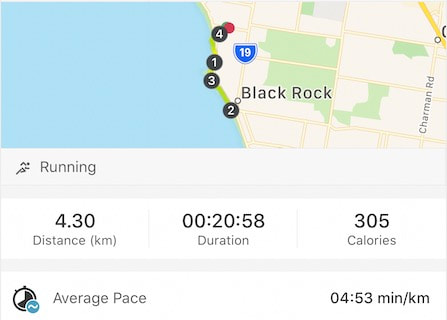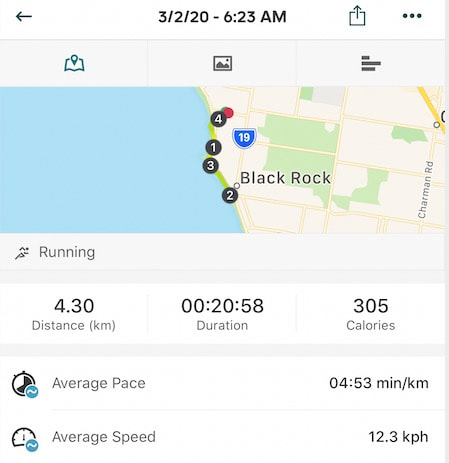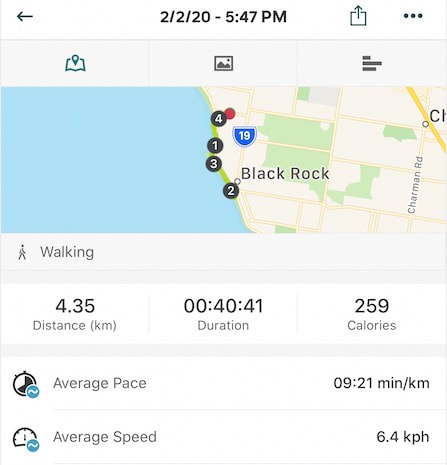|
SEARCH My Blog (Opens in new tab)
Learn the definitive biological answer
More than once, I've read articles claiming that walking burns as many calories as running. By observation, that's "obviously" untrue. If you're breathing harder when exercising, then you are burning more calories. We breath harder when we run.
But all is not lost! You CAN burn more calories walking than running. You just have to make sure that you are not comparing apples with oranges.
I was pushing up one of the inclines on the running trail, trying to maintain a good cadence, and feeling the effort. I ran past a couple strolling gently along the track and having a conversation.
"How can people think walking burns the same calories as running", I thought to myself. I've seen this expressed regarding losing weight - "walking is just as good as running". On Quora, someone asked, "Does walking burn more calories than running?" There were 43 answers (when I last looked). One answer started with this "I'm perplexed by the other answers which insist that walking and running burn the same amount. That is not what one expects from biology..." That answer is on the right track. The answer is in the METS
I'm not sure how or why there can be such confusion. Let's look at the biology.
When you require more energy to sustain endurance exercise, then you need to take in more oxygen. Oxygen is needed to convert the sugars in your body to energy for your muscles. If you are walking and not breathing harder than walking around the house, then you are not burning more calories than walking around the house. If you are running and breathing heavily, then your body is calling out for more oxygen to create the energy you need to keep going. You are burning more calories than walking. In fact there is an exertion system called METS which relates effort and breathing to oxygen consumption (and hence calorific consumption). One metabolic equivalent (MET) is defined as the amount of oxygen consumed while sitting at rest and is equal to 3.5 ml O2 per kg body weight x min. Moderate-intensity activities are defined as 3.0 to 5.9 METs. Walking at 3.0 miles per hour requires 3.3 METs of energy expenditure and is therefore considered a moderate-intensity activity. Vigorous-intensity activities are defined as 6.0 METs or more. The level of effort in METS is often described in terms of depth of breathing. Light-intensity of 1.5 to 3 METS has "barely detectable breathing increase", moderate-intensity of 3 to 6 METS you can carry on a conversation, and vigorous-intensity of 6 to 9 METS you cannot carry on a conversation because you need to concentrate on breathing. The entire basis of METS is that running consumes more energy than walking, and this manifests itself in the depth of breathing. So how did things get messed up, where does the confusion come from? Running consumes twice the energy of walking - per minute
The confusion is analogous to the oldest diet myth that "muscle weighs more than fat". This idea is used to explain that you might put on weight while dieting and exercising as you might be "replacing" the lighter fat with heavier muscle.
It's true that you might be losing fat, and that you might be adding muscle. But unfortunately, 1kg of fat weighs the same as 1kg of muscle. There is no weight benefit in this change, but there is, of course, a body composition benefit. And muscle is more compact than fat, so 1kg of muscle will take less space and look more firm. That's good. Another persistent myth is the "fat-burning zone", but that's for another post. Regarding walking versus running, let's eliminate all confusion. Running burns more calories than walking for the same time. There, it is that simple. If you run for 5 minutes and walk for 20 minutes, then you will burn more calories when walking. Walking consumes 3.3 METS per minute - running more than 6.0, let's say 6.6. That means running consumes twice the energy of walking per minute. Walk twice as long as running and you burn the same energy. For me, 2.3X more energy used in running
Here's some of my own data. I walk the same trail that I often run, often the same distance. The data below is comparing walking and running over the same route.
The distance of 4.3km takes me ~21 minutes to run (at an average pace of 4:53) and consumes 305 calories (according to Runtastic). My average running speed is 12.3 kph. Dividing 305 calories by 21 minutes gives 14.52 calories per minute for running.
Walking that distance takes ~41 minutes and consumes 259 calories. My average walking speed is 6.4 kph. Dividing 259 calories by 41 minutes gives 6.32 calories per minute for walking.
That shows, in my case, that running consumes 2.3 times more calories per minute than walking. If I wanted to burn the same calories walking as I do running, then I would need to walk 2.3 minutes longer. If you want to lose weight, remember, walking does not burn the same calories as running - unless you walk for twice as long as the time you run. When someone next asks "does walking burn more calories than running" you know the biologically correct answer.
Follow me on Quora for more health and fitness tips.
If you enjoyed this article >> Follow me Leave a comment >> Share it >> Stay healthy If you have any questions email me and I will get back to you.  RSS Feed RSS Feed
Latest: get your free customised fitness plan designed uniquely for you.
|
ChoicesSince I was diagnosed at 50 with Type 2 diabetes I've been learning how to do bone-building fitness training which lowers my age. You can too. It's your choice. Walter Categories
All
Archives
May 2023
|







